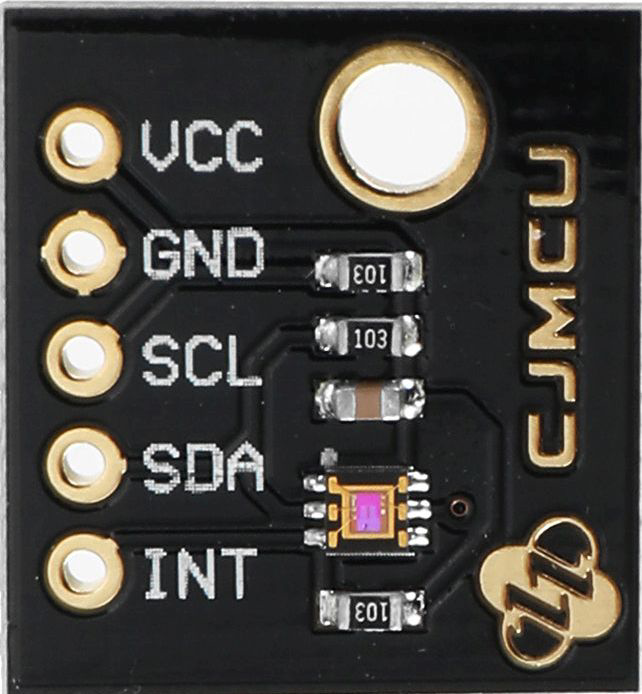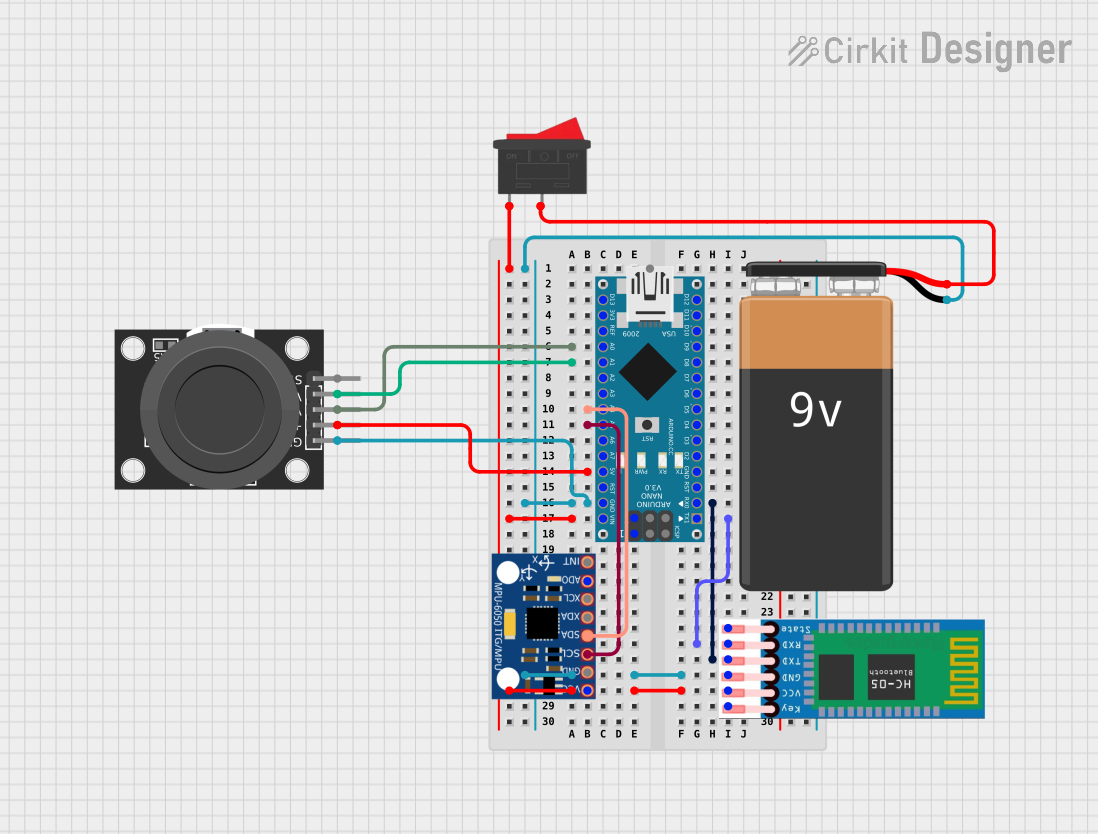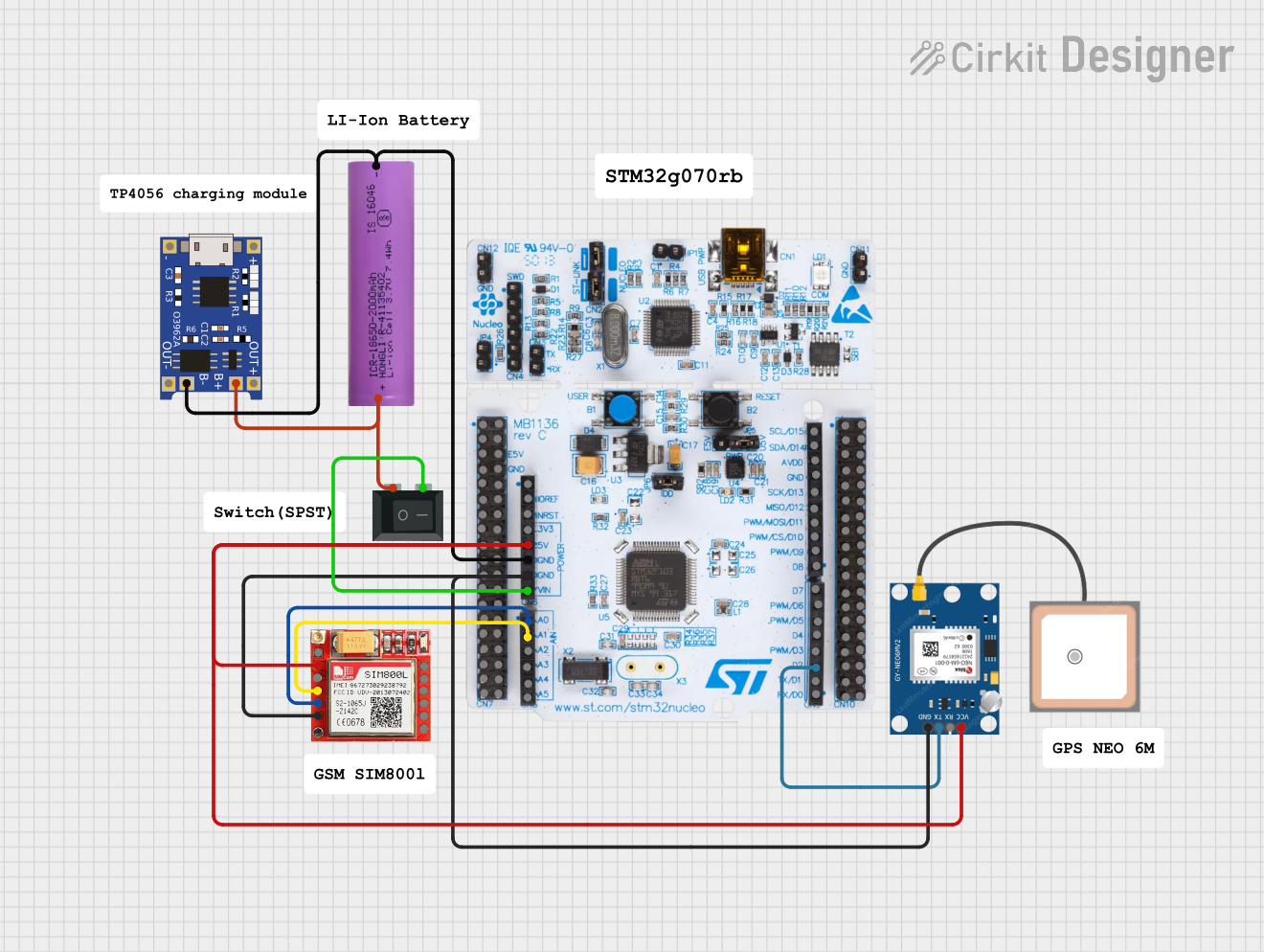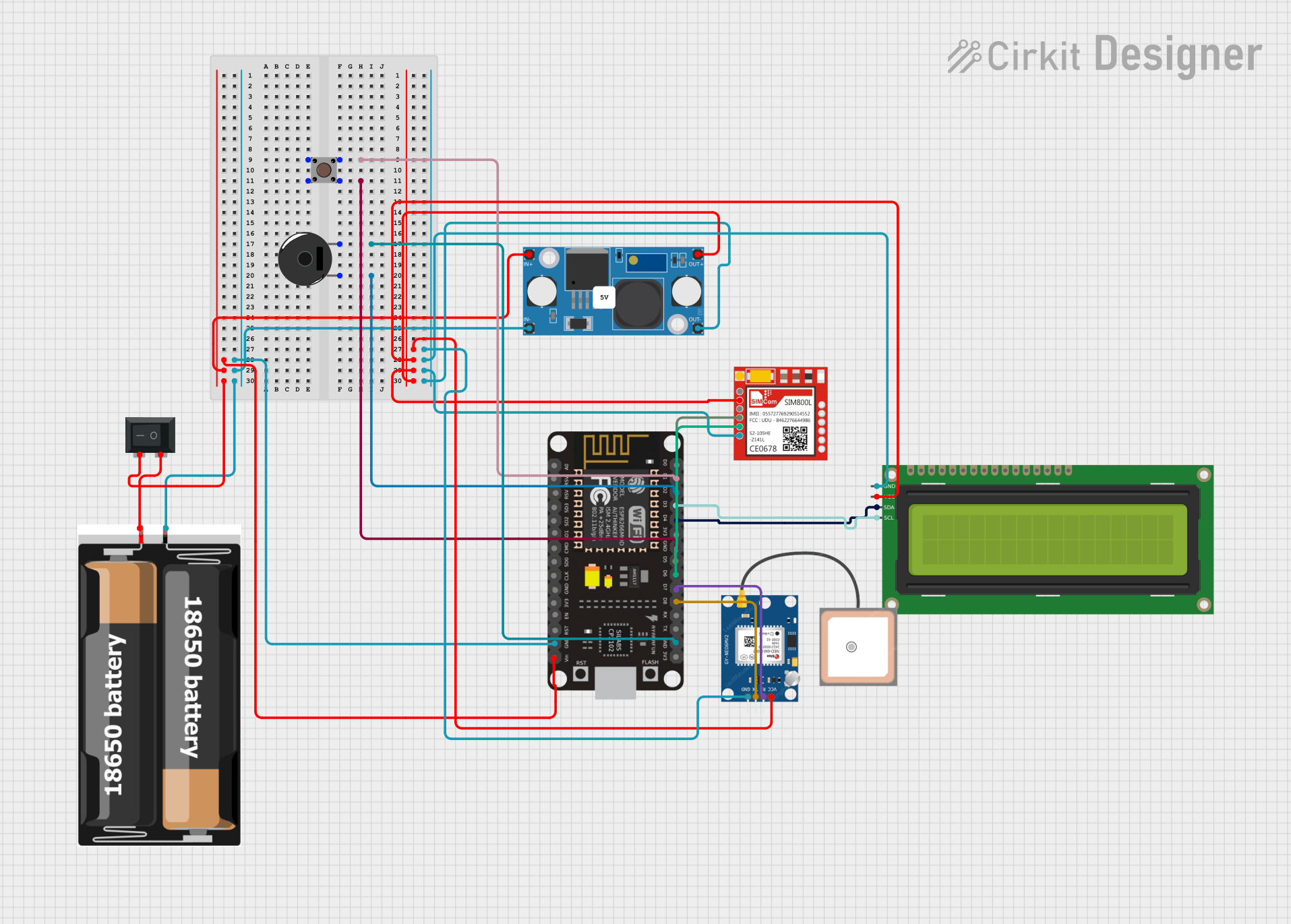
How to Use CJMCU-6035: Examples, Pinouts, and Specs

 Design with CJMCU-6035 in Cirkit Designer
Design with CJMCU-6035 in Cirkit DesignerIntroduction
The CJMCU-6035, manufactured by UHXRUY, is a high-performance sensor module that integrates a high-precision 3-axis accelerometer and gyroscope. This module is designed for motion detection, orientation sensing, and environmental monitoring. It is widely used in applications such as robotics, drones, smartphones, and other devices requiring accurate motion tracking and orientation data.
The CJMCU-6035 is based on the VEML6035 Ambient Light Sensor, which provides precise light intensity measurements. It is ideal for applications requiring ambient light sensing, such as automatic brightness adjustment in displays, smart lighting systems, and environmental monitoring.
Explore Projects Built with CJMCU-6035

 Open Project in Cirkit Designer
Open Project in Cirkit Designer
 Open Project in Cirkit Designer
Open Project in Cirkit Designer
 Open Project in Cirkit Designer
Open Project in Cirkit Designer
 Open Project in Cirkit Designer
Open Project in Cirkit DesignerExplore Projects Built with CJMCU-6035

 Open Project in Cirkit Designer
Open Project in Cirkit Designer
 Open Project in Cirkit Designer
Open Project in Cirkit Designer
 Open Project in Cirkit Designer
Open Project in Cirkit Designer
 Open Project in Cirkit Designer
Open Project in Cirkit DesignerTechnical Specifications
Key Technical Details
- Manufacturer: UHXRUY
- Part ID: CJMCU-6035 VEML6035
- Sensor Type: Ambient Light Sensor with integrated 3-axis accelerometer and gyroscope
- Supply Voltage: 2.5V to 3.6V
- Communication Interface: I2C (Inter-Integrated Circuit)
- I2C Address: 0x10 (default)
- Operating Temperature Range: -40°C to +85°C
- Light Sensitivity Range: 0.0036 lux to 18.45 klux
- Accelerometer Range: ±2g, ±4g, ±8g, ±16g (configurable)
- Gyroscope Range: ±125°/s, ±250°/s, ±500°/s, ±1000°/s, ±2000°/s (configurable)
- Power Consumption: Low power mode available for energy-efficient applications
Pin Configuration and Descriptions
The CJMCU-6035 module has the following pinout:
| Pin | Name | Description |
|---|---|---|
| 1 | VCC | Power supply input (2.5V to 3.6V) |
| 2 | GND | Ground |
| 3 | SDA | I2C data line |
| 4 | SCL | I2C clock line |
| 5 | INT | Interrupt output (motion detection) |
| 6 | NC | Not connected (leave unconnected) |
Usage Instructions
How to Use the Component in a Circuit
- Power Supply: Connect the VCC pin to a 3.3V power source and the GND pin to ground. Ensure the power supply is stable and within the specified voltage range.
- I2C Communication: Connect the SDA and SCL pins to the corresponding I2C pins on your microcontroller. Use pull-up resistors (typically 4.7kΩ) on the SDA and SCL lines if not already present on the module.
- Interrupt Pin: Optionally, connect the INT pin to a GPIO pin on your microcontroller to handle motion detection or light threshold interrupts.
- Configuration: Use I2C commands to configure the sensor's operating modes, sensitivity, and thresholds as required for your application.
Important Considerations and Best Practices
- I2C Address Conflicts: Ensure no other devices on the I2C bus share the same address (0x10). If conflicts occur, consider using an I2C multiplexer.
- Ambient Light Calibration: Calibrate the sensor for your specific environment to improve accuracy.
- Motion Sensitivity: Adjust the accelerometer and gyroscope ranges based on the expected motion dynamics of your application.
- Power Management: Use the low-power mode to conserve energy in battery-powered applications.
Example Code for Arduino UNO
Below is an example Arduino sketch to read ambient light data from the CJMCU-6035:
#include <Wire.h>
// I2C address of the CJMCU-6035
#define CJMCU_6035_ADDR 0x10
void setup() {
Wire.begin(); // Initialize I2C communication
Serial.begin(9600); // Initialize serial communication for debugging
// Configure the sensor (example: set gain and integration time)
Wire.beginTransmission(CJMCU_6035_ADDR);
Wire.write(0x00); // Command register
Wire.write(0x01); // Example configuration value
Wire.endTransmission();
Serial.println("CJMCU-6035 initialized.");
}
void loop() {
uint16_t lightData = 0;
// Request 2 bytes of light data from the sensor
Wire.beginTransmission(CJMCU_6035_ADDR);
Wire.write(0x04); // Data register
Wire.endTransmission();
Wire.requestFrom(CJMCU_6035_ADDR, 2);
if (Wire.available() == 2) {
lightData = Wire.read(); // Read high byte
lightData = (lightData << 8) | Wire.read(); // Read low byte
}
// Print the light intensity in lux
Serial.print("Ambient Light: ");
Serial.print(lightData * 0.0036); // Convert to lux
Serial.println(" lux");
delay(1000); // Wait 1 second before the next reading
}
Troubleshooting and FAQs
Common Issues and Solutions
No Data from Sensor:
- Ensure the I2C connections (SDA, SCL) are correct and secure.
- Verify the I2C address (0x10) matches the sensor's default address.
- Check for proper pull-up resistors on the I2C lines.
Incorrect Light Readings:
- Calibrate the sensor for your specific environment.
- Avoid placing the sensor in direct sunlight or near reflective surfaces.
Interrupt Pin Not Working:
- Ensure the INT pin is connected to a GPIO pin configured as an input.
- Verify the interrupt threshold settings via I2C commands.
Power Issues:
- Confirm the power supply voltage is within the 2.5V to 3.6V range.
- Check for noise or instability in the power supply.
FAQs
Can the CJMCU-6035 be used with 5V microcontrollers?
Yes, but you must use a level shifter for the I2C lines to avoid damaging the sensor.What is the maximum I2C clock speed supported?
The CJMCU-6035 supports I2C clock speeds up to 400kHz (Fast Mode).How do I change the accelerometer or gyroscope range?
Use the appropriate I2C commands to configure the desired range. Refer to the sensor's datasheet for details.Can the sensor operate in low-light conditions?
Yes, the sensor is highly sensitive and can measure light intensities as low as 0.0036 lux.